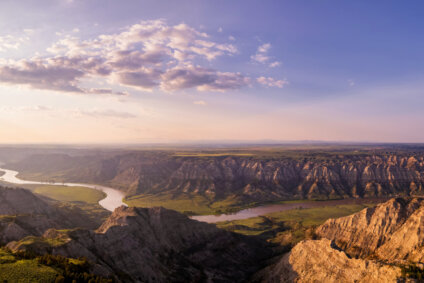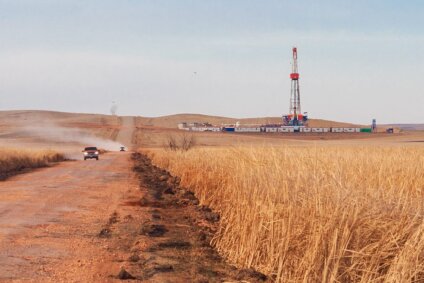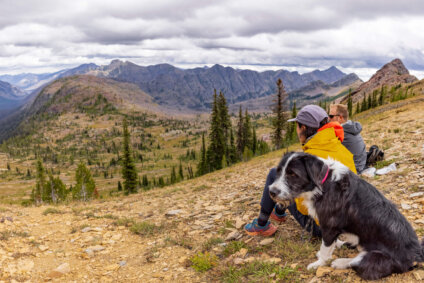The Hidden Piece of Montana’s Public Lands Puzzle
Public access secured in important areas, but questions about the Land Board persist
Update, 7/21
On Monday, July 20, the Montana Land Board voted unanimously to approve the addition of 600 acres to the 9,000-acre Garrity Mountain Wildlife Management Area. Later, the Land Board also unanimously approved FWP’s purchase of 97 acres to add to the C. Ben White Memorial fishing access site on the West Fork of the Bitterroot River.
As a result, Montanans will have more access to public lands for hunting, fishing, hiking, camping, wildlife watching, and more. These newly protected lands were facing the threat of development if the Land Board had not approved the acquisitions. We're glad the Board listened to Montanans and took steps to secure and improve important public access, but the job isn't done. Montanans are united in believing that public access is an essential element of our outdoor way of life, and the Land Board needs to continue to protect the public lands and access that we all cherish by strongly supporting local projects that will allow us all to enjoy our public lands for generations to come.
Original post, 5/19
Roll the windows down, breath in that fresh mountain air, and wind south along Highway 569 south of Anaconda, through the Beaverhead-Deerlodge National Forest and past the Anaconda-Pintler Wilderness. Soon, you’ll reach the Mt. Haggin Wildlife Management Area (WMA). The 58,000-acre area is the largest WMA managed by Montana Fish, Wildlife, and Parks, and one of the most spectacular. And on Monday, May 18, it got a little bigger when the Montana Land Board (read on to learn more about this little-known but quite important body) approved the purchase of a 244-acre addition.
The addition will protect critical wildlife habitat, including a mule deer and elk migration pathway that connects winter range on the west side of the Continental Divide to calving and fawning areas and summer range east of the Divide. This new property includes meadows and aspen and willow stands that provide year-round habitat for moose, beaver, black bear, ruffed grouse, and short-tailed weasel. It provides summer habitat for sandhill cranes, several species of songbirds, and raptors. Oregon Creek, which runs along the western portion of the addition, provides habitat for brook trout and Fish Wildlife, and Parks has plans to restore native westslope cutthroat trout and Arctic grayling to the adjacent French Creek watershed.
While 244 acres seems like small potatoes in the grand scheme of Montana’s public lands, protecting these small parcels can have outsized impacts on the integrity of the surrounding wildlands. Due to the patchwork nature of land ownership in Montana, ecologically important areas are often cut off from each other, and protected state lands like the Mt. Haggin WMA can have major benefits for wildlife connectivity and play an important role in protecting intact ecosystems. Connecting these previously isolated areas is an important step in continuing to assemble Montana’s protected lands puzzle, and we’re glad to see FWP continue to recognize the importance of linking important wildlands.
But what of the process behind the addition? What is the Land Board, and how does it purchase lands like Mt. Haggin?
The State Board of Land Commissioners, to give it its full title, is comprised of the top five state officials in Montana: the governor, attorney general, state auditor, superintendent of public instruction, and secretary of state. The Board meets monthly to discuss topics like – and please bear with me here – state trust land management, land banking trades & purchases, fee title acquisition for the Department of Fish, Wildlife and Parks, and state land oil and gas lease sales. All acquisition of state land over 100 acres or $100,000 must be approved by a Land Board vote.
This isn’t the sexiest stuff out there, but Land Board decisions can have critical implications for Montana’s public lands. Staff at state land management agencies and landowners put years of blood, sweat, and tears into developing proposals like the Mt. Haggin addition, which must pass multiple levels of review, including environmental assessments and a vote by the Montana Fish and Wildlife Commission. The Land Board is the final step in a long process, and unfortunately, politics can play a role in its decisions. During the 2019 legislative session, the Montana Legislature passed a bill that would have required the Land Board to approve all conservation easements purchased by Habitat Montana, putting the fate of critical conservation easements in the hands of elected officials rather than experienced agency personnel and private landowners. Thankfully, Governor Bullock vetoed the bill.
In recent years, the Land Board has not always made good decisions like it did on Monday. Land Board interference has created conflict where none was necessary, has put the hard work of FWP and landowners at risk, and has threatened public access. While we commend the Land Board for approving the Mt. Haggin addition, we’ll be watching what they do next, and we’ll continue to hold them accountable to Montanans.
When the time is right, I hope you’ll join us in standing up for the critical need to protect more important state lands.
If you’re interested in learning more about the Land Board or the Mt. Haggin addition, feel free to contact me at nmarion@wildmontana.org or 406-624-9622.
Stay Connected
"(Required)" indicates required fields



